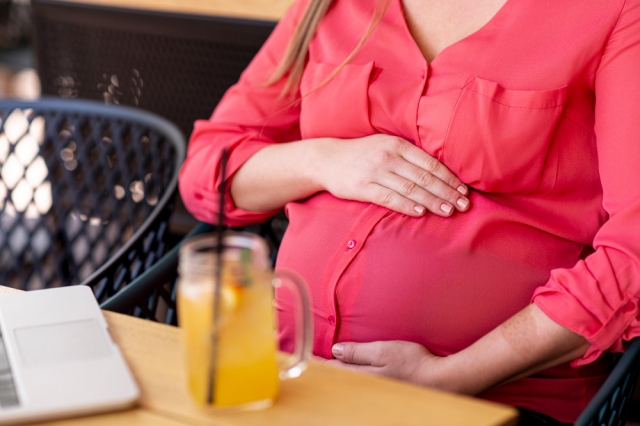Bringing a new life into the world is a profound experience, but the postpartum period can present its own set of challenges. For new mothers, adjusting to life with a newborn while navigating the physical and emotional shifts of recovery can be overwhelming. Understanding and addressing common postpartum ailments can make this transition smoother and more manageable. This article explores five prevalent issues that recently pregnant mothers may encounter and offers practical remedies to aid in their recovery.
1. Postpartum Swelling and Aches
Postpartum swelling and aches are common as the body adjusts after childbirth. This swelling, also known as edema, often affects the legs, feet, and hands, and can be attributed to the body's natural fluid retention process. Hormonal changes and the body's need to eliminate excess fluid accumulated during pregnancy contribute to this phenomenon. Additionally, the physical stress of labor and delivery can exacerbate these symptoms, leading to discomfort and pain.
To alleviate postpartum swelling, new mothers can try several remedies. Elevating the legs, especially when resting, helps fluids return to the upper body and reduces swelling. Wearing compression stockings can also improve circulation and minimize edema. Staying hydrated is essential, as water helps flush out excess fluids. Gentle, low-impact exercises like walking can promote better circulation and reduce swelling over time.
Managing aches can be approached through various methods. Applying heat or cold packs to sore areas can provide relief, depending on what feels better for the individual. Over-the-counter pain relievers, such as acetaminophen or ibuprofen, can be effective, but it's crucial to consult with a healthcare provider before taking any medication. Regular stretching and light physical activity can help keep muscles from becoming too tense and aid in overall comfort.
For persistent swelling or pain, it's advisable to seek medical attention. In some cases, severe swelling or localized pain could indicate a more serious condition, such as a blood clot or infection. Keeping open communication with healthcare providers ensures that any underlying issues are promptly addressed.
2. Perineal Pain
Perineal pain is another common issue for new mothers, especially for those who had a vaginal delivery. The perineum, the area between the vaginal opening and the rectum, can become sore and tender following childbirth. This discomfort may stem from tearing during delivery or from an episiotomy, a surgical cut made to widen the vaginal opening.
To manage perineal pain, maintaining good hygiene is crucial. Keeping the area clean and dry helps prevent infections and promotes healing. Using ice packs or cold compresses in the immediate postpartum period can reduce swelling and numb pain. Over-the-counter analgesic sprays or topical treatments may also provide some relief.
Sitz baths, where the mother sits in a few inches of warm water, can be soothing and help with healing. Adding herbal remedies like witch hazel or chamomile to the bath can enhance comfort. Additionally, avoiding prolonged sitting and opting for side-lying positions during rest can minimize pressure on the perineum and aid in recovery.
If pain persists beyond the expected recovery period or is accompanied by other symptoms like severe bleeding or fever, it's important to consult a healthcare provider. Persistent perineal pain could signal complications that need professional evaluation and treatment.
3. Addressing Mastitis and Breastfeeding Issues
Mastitis, an infection of the breast tissue, is a concern for many breastfeeding mothers. It typically presents as redness, swelling, and pain in one or both breasts, often accompanied by flu-like symptoms such as fever and chills. Mastitis can result from milk stagnation, cracked nipples, or bacterial infection entering the breast tissue.
To address mastitis, it's essential to continue breastfeeding or pumping milk to help clear the infection and relieve milk buildup. Applying warm compresses before feeding can help with milk flow and alleviate discomfort. Ensuring proper latch and breastfeeding technique can prevent cracked nipples and reduce the risk of infection. If mastitis occurs, antibiotics prescribed by a healthcare provider are usually necessary to clear the infection.
In addition to addressing mastitis, managing general breastfeeding issues involves seeking support and guidance. Consulting with a lactation consultant can provide valuable insights into proper latch techniques, milk supply concerns, and overall breastfeeding strategies. Ensuring that the baby is feeding effectively and frequently can help establish a good milk supply and prevent complications.
For persistent issues or if symptoms of mastitis worsen despite home care, it's important to contact a healthcare provider. They can assess the condition and recommend appropriate treatments or interventions to ensure both mother and baby remain healthy.
4. Postpartum Nutrition for Recovery
Proper nutrition is fundamental for postpartum recovery, providing the energy and nutrients needed to heal and care for a newborn. A balanced diet supports the body's healing processes, boosts energy levels, and ensures sufficient milk production for breastfeeding mothers. Key nutrients such as protein, iron, calcium, and vitamins are essential during this period.
Incorporating a variety of foods into the diet can enhance recovery. Emphasizing fruits and vegetables, whole grains, lean proteins, and healthy fats supports overall health. Staying hydrated by drinking plenty of water is also crucial, particularly for breastfeeding mothers who require additional fluids.
To help new mothers focus on their nutritional needs, consider including the following in their diet:
-
Lean proteins (chicken, fish, tofu)
-
Whole grains (brown rice, oats, quinoa)
-
Fresh fruits and vegetables
-
Healthy fats (avocado, nuts, olive oil)
-
Hydrating fluids (water, herbal teas)
Paying attention to dietary needs and making nutritious choices can significantly aid in postpartum recovery and overall well-being.
5. Managing Postpartum Anxiety
Postpartum anxiety is a prevalent issue among new mothers, characterized by excessive worry, nervousness, or fear that can disrupt daily life and well-being. Unlike postpartum depression, anxiety may not always present with depressive symptoms but can still be profoundly distressing. Symptoms often include persistent concerns about the baby's health, one's own well-being, or the ability to handle new responsibilities.
Managing postpartum anxiety involves incorporating self-care strategies and seeking support. Establishing a routine can create a sense of control and predictability, while relaxation techniques such as deep breathing, mindfulness, or meditation can help alleviate anxiety symptoms. Regular physical activity, like walking, can also boost mood and reduce anxiety by releasing endorphins.
Support from others is essential in managing anxiety. Engaging with support groups, whether in-person or online, allows new mothers to share experiences and receive advice from those who have faced similar challenges. Additionally, discussing feelings with a trusted friend, family member, or counselor can provide valuable emotional support and practical strategies.
For more severe or persistent anxiety, professional help may be necessary. Mental health professionals can offer therapies such as cognitive-behavioral therapy (CBT), which addresses negative thought patterns and develops coping strategies. In some cases, medication may be recommended, but this should be carefully considered with a healthcare provider to ensure the best approach for managing symptoms.
Addressing Physical Recovery and Exercise
Physical recovery after childbirth involves gradually resuming physical activity while allowing the body to heal. Initially, focusing on gentle exercises and stretching helps restore strength and flexibility without overwhelming the body. Activities like pelvic floor exercises and abdominal breathing can support recovery and improve core strength.
As healing progresses, new mothers can incorporate more structured exercise routines. Low-impact activities such as walking or postpartum yoga can enhance physical fitness while being mindful of the body's limits. It's important to listen to one's body and avoid high-impact or strenuous exercises until cleared by a healthcare provider.
Consistency and moderation are key to a successful postpartum exercise routine. Engaging in regular physical activity can help manage stress, improve mood, and support overall physical health. However, it's crucial to start slowly and adjust the routine based on individual comfort and recovery progress.
Navigating the postpartum period can be challenging, and understanding common ailments and remedies can provide significant relief. However, it's essential to recognize when professional help is needed. If symptoms persist, worsen, or are accompanied by severe discomfort, unusual changes, or signs of infection, seeking medical advice is crucial. Healthcare providers can offer personalized support and treatment to ensure a healthy recovery and well-being for both mother and baby.






